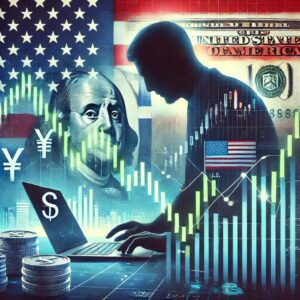
For forex traders in the USA, understanding key economic terms like recession and definition is crucial to navigating the volatile financial markets. A recession can have profound impacts on currency values, interest rates, and market sentiment. In this blog, we will break down what a recession is, how it is defined, and what factors constitute a recession. By understanding these concepts, forex traders can better anticipate market shifts and make informed trading decisions.
What is a Recession? The Basic Definition
A recession is a significant downturn in economic activity that spans several months or even longer. For most economists, a recession is officially recognized when a country’s GDP declines for two consecutive quarters. However, other indicators are also considered, such as rising unemployment, decreased consumer spending, and declining industrial production.
For forex traders, a recession and Definition often signals a slowdown in economic growth, which can lead to lower consumer demand, higher unemployment rates, and less investment in businesses. Understanding this basic recession definition can help traders anticipate currency price fluctuations, especially in a global economic environment.
Define Recession: Key Characteristics Forex Traders Should Monitor
To properly assess whether a recession is taking place, traders need to understand the core characteristics that define it. These include:
1. Decline in GDP: A reduction in GDP over two consecutive quarters is one of the most common signs of a recession.
2. Increase in Unemployment: As businesses cut back on production and investment, layoffs often follow, pushing unemployment rates higher.
3. Decreased Consumer Confidence and Spending: When consumers fear job losses or a general economic downturn, they tend to spend less, which impacts economic activity.
4. Slower Industrial Production: A drop in manufacturing and production can signal a recession, as businesses scale back on producing goods due to decreased demand.
These indicators provide forex traders with early signals of potential currency fluctuations as the economy weakens.
What Constitutes a Recession? Key Economic Indicators for Forex Traders
For forex traders in the USA, understanding what constitutes a recession goes beyond just tracking GDP. Several economic indicators play a crucial role in identifying whether a recession is imminent or already underway:
1. GDP Decline: The most straightforward indicator, two consecutive quarters of negative GDP growth is often the first sign of a recession.
2. Rising Unemployment: High unemployment rates can influence consumer confidence, affecting spending patterns and ultimately impacting currency values.
3. Inflation and Interest Rates: Central banks may adjust interest rates in response to recession fears, which has direct implications for forex traders. A drop in interest rates typically weakens a currency, while an increase could boost it.
4. Trade Policies and Global Trade: Trade tariffs or policy changes (such as those implemented under former President Trump) can exacerbate recessions by reducing exports or increasing costs for businesses.
As a forex trader, understanding these signals is key to predicting currency movements. A recession could lead to a decline in the value of the U.S. Dollar (USD) if economic growth slows down or if the Federal Reserve adjusts interest rates in response.
US Economy Outlook: Is a Recession and Definition on the Horizon for Forex Traders?
As of March 2025, the U.S. economy is showing signs of slowing down but has not yet entered a recession. The latest GDP data from the fourth quarter of 2024 revealed a modest expansion of 2.3%, but this is down from previous quarters. The Federal Reserve has held interest rates steady, signaling confidence in the current economic conditions but also acknowledging potential risks.
Despite some uncertainty surrounding trade policies and global economic trends, there is currently no significant data weakness indicating an imminent recession. For forex traders, this suggests a stable outlook for the U.S. Dollar (USD), but market sentiment can shift quickly based on new data, such as the upcoming GDP release on March 27, 2025.
What Forex Traders Need to Know About Recessions
1. Monitor Key Economic Indicators: As a forex trader, keeping an eye on GDP reports, unemployment data, consumer confidence, and industrial production can give you a sense of where the economy is headed.
2. Interest Rate Decisions: The Federal Reserve plays a critical role in shaping the value of the U.S. Dollar. During a recession, the Fed may lower interest rates to stimulate growth, which can lead to a weaker dollar. Conversely, a rate hike can strengthen the dollar.
3. Global Impact: Recessions in other countries, particularly trading partners, can also affect currency values. For instance, if major economies experience recessions, it can reduce demand for U.S. exports, which can have a knock-on effect on the value of the dollar.
4. Use of Technical and Fundamental Analysis: Combining fundamental analysis of recession-related data with technical analysis will help you better predict price movements in the forex market.
Conclusion: How Recession and Definition Impact Forex Traders
As we’ve explored, recession and definition are important concepts every forex trader in the USA should understand. Recessions bring significant changes to the economy, which can affect currency prices, interest rates, and investor sentiment. By closely monitoring key economic indicators, you’ll be better prepared to anticipate market movements and make informed trading decisions.
With the current data showing a relatively stable U.S. economy but also highlighting risks, such as trade policy uncertainty and potential inflation pressures, staying informed is essential for success in forex trading.
